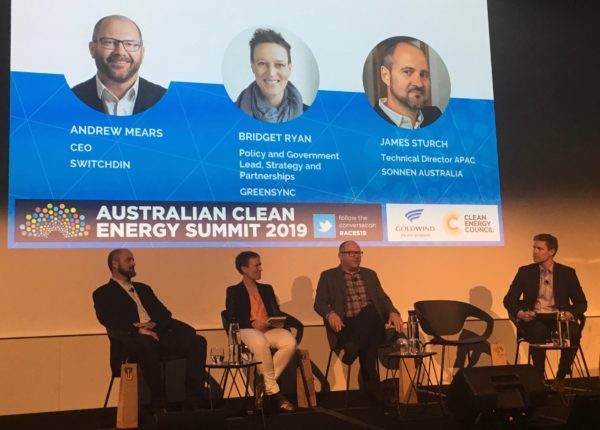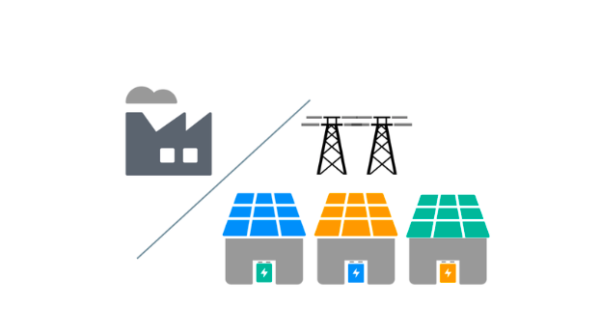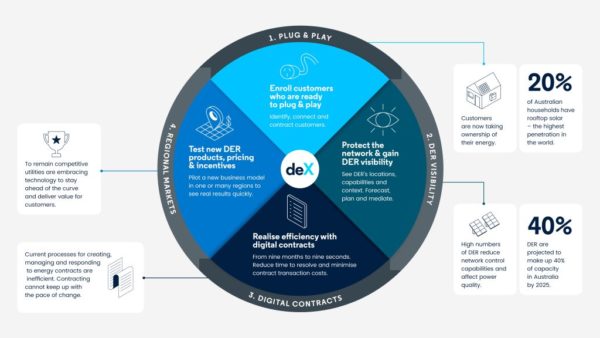A swarm of 55,000 batteries is set to connect across Australia as virtual power plant (VPP) projects leveraging around $67 million in subsidies begin more organised, optimised and monitored interaction with the grid, says Ryan Wavish, Principal Consultant at Marchment Hill Consulting.
As Wavish chaired a panel at the Australian Clean Energy Summit (ACES) on Power sharing: the emergence of virtual power plants and battery swarms, on July 31, the Australian Energy Market Operator (AEMO) amplified the buzz by announcing its VPP demonstration program.
AEMO is inviting participants to register for the program which will test the potential for Australia’s distributed energy resources — including residential and commercial rooftop solar systems, integrated batteries, and controllable load devices such as smart appliances and electric vehicle chargers — to aggregate and provide energy network services at the scale of existing thermal generators, as well as consumer benefits.
The previous week, a report by AEMO and Energy Networks Australia calculated that such distributed energy resources (DERs), co-ordinated in a transparent two-way energy system could begin to deliver $1 billion of benefits to energy consumers from 2030.
“VPPs will play an important role in maintaining grid stability and managing peaks in demand by harnessing consumer-owned energy assets,” said Darren Miller, CEO of the Australian Renewable Energy Agency, which is supporting the AEMO demonstration program with $2.46 million in funding.
The program is designed to inform changes to the regulatory frameworks and system operations so that DER can be effectively integrated into Australia’s energy system and market.
The future upside of simply delivered, transparently controlled, efficiently regulated VPPs is enormous, but as Wavish pointed out, only 2,500 batteries are currently connected to VPPs and “it’s early days” as the movement tackles a number of challenges…
Consumer trust in retailers …
Retailers are a natural medium for aggregating consumer assets into VPPs.
Among ARENA-funded VPP projects was the successful trial of an AGL-run VPP in Adelaide which will now be extended to customers in Victoria, South Australia, New South Wales and Queensland. Customers with compatible batteries already installed can enter into a 12-month VPP contract with AGL and receive $280 towards their electricity bill within that year. For customers without battery storage, AGL intends to offer $1,000 towards battery purchase and installation in return for five-year participation in its VPP program.
Marchment Hill has been working with a number of energy retailers on their VPP offering to customers and, says Wavish, “some of the challenges they’re facing is around the trust that they have in the market. A lot of people who buy solar and batteries are looking to remove themselves from the energy companies, so for them to cede some level of control back to those same companies for participation in VPPs …”
Wavish sees big opportunities for technology companies such as sonnen to jump into the trust breach.The German battery manufacturer already has plans to aggregate its sonnenFlat-package customers into the equivalent of a gas-fired peaking power plant, delivering electricity and power services to the National Electricity Market, with benefits flowing both ways.

Image: pv magazine
Complexity of offering and operation
“VPPs are by nature incredibly technical — they’re quite overwhelming even for industry players to get their heads around,” said James Sturch, sonnen’s Technical Director for the APAC region, speaking on the Summit’s Power sharing panel.
How the systems are managed behind the scenes doesn’t necessarily matter, says Sturch, who explains that sonnen communicates to customers that participation, “Is going to help them reduce their bills, help create a more stable grid and enable an expedited transition to renewables.”
The actual technical challenges include voltage rises, caused in part because the grid is not designed for reverse power flows, a situation exacerbated by inadequate cables in old housing stock, which resist the exporting of energy from house to grid. The CEC is already collaborating on educating battery and solar installers to verify cable capacity.
But Sturch says that Australia’s unreliable internet communications pose a much more intractable problem, given VPP providers are trying to direct the responses of potentially tens of thousands of devices.
In Germany, says Sturch, sonnen solved a similar problem by creating an AI script that allowed systems to themselves respond to signals from the grid, rather than waiting for centralised direction. “Response time, when you’re offering grid services is a really big issue,” says Sturch. “If we’re going to commit to distributed resources dispatching a megawatt, we have to do it within a certain timeframe to avoid financial penalties.”
Ensuring cybersecurity
“This is key to us,” said panel participant, Andrew Mears, CEO and founder of SwitchDin, which provides a platform for building VPPs, which incorporates secure gateway devices to help manage flexible electricity loads.
At the nexus where rules-based market standards and multifarious products provided by hundreds of different vendors adhering to a variety of different standards meet, SwitchDin provides marshalling capabilities.

Graphic: SwitchDin
“How do you cost-effectively manage 30 vendors of products from all around the world, some with websites outside Australia?” Mears rhetorically asked the Summit audience. SwitchDin is dedicated to maintaing secure energy management systems, with an independent communications channel for utility-grade deployment.
Although Mears acknowledges the importance of rules and standards, he says, one of the benefits of product diversity for consumers is a high level of proprietary innovation. “You don’t necessarily want to force standards on that sector because it reduces the opportunities for innovation in new technology,” he says
Bridget Ryan, Policy and Government Lead at GreenSync, the ARENA-funded developers of the Decentralised Energy Exchange, or deX, software platform, said AEMO’s VPP demonstration program will develop protocols for VPP platforms proposing to communicate to the market.
The deX system is technology-agnostic and designed to allow consumer energy assets to be registered and visible to the grid — a critical element in enabling AEMO to observe and gather data on grid-VPP interactions.

Graphic: GreenSync
Electric vehicles and the VPP equation
The panel participants were overwhelmingly positive about the role electric vehicles and their chargers will play in a VPP-enabled market.
GreenSync is already working with an overseas client to enable electric vehicle chargers to provide services to the network — “We can do that today, and over time the ability for all those assets to integrate and provide services to the grid will just grow,” says Ryan.
Sturch says that in Germany, sonnenFlat packages include 25,000 free EV kilometres per year, and “We manage how the car is charged. We can integrate it with all the rest of the market mechanisms so it isn’t this big infrastructure threat that’s going to crash the grid because everyone rocks up at home at 6pm and starts charging up their cars.”
Mears anticipates that for customers EVs will “drive the full vision” of solar energy, making sense of excess rooftop solar generation stored in a battery to charge a vehicle, thereby vastly reducing both energy and fuel bills. “It’s going to be an extremely compelling proposition,” he says.
AEMO’s Emerging Markets and Services Executive General Manager, Violette Mouchaileh, said last week on the opening of registrations to the VPP demonstration program, “We believe DER growth can empower consumers to contribute scalable value to our future energy system by joining VPs that actively participate in Australia’s electricity markets.”
She encouraged VPPs to register, “to accelerate the shared learning on how to safely and efficiently integrate, operate and regulate these emerging technologies into the NEM.”
This content is protected by copyright and may not be reused. If you want to cooperate with us and would like to reuse some of our content, please contact: editors@pv-magazine.com.









1 comment
By submitting this form you agree to pv magazine using your data for the purposes of publishing your comment.
Your personal data will only be disclosed or otherwise transmitted to third parties for the purposes of spam filtering or if this is necessary for technical maintenance of the website. Any other transfer to third parties will not take place unless this is justified on the basis of applicable data protection regulations or if pv magazine is legally obliged to do so.
You may revoke this consent at any time with effect for the future, in which case your personal data will be deleted immediately. Otherwise, your data will be deleted if pv magazine has processed your request or the purpose of data storage is fulfilled.
Further information on data privacy can be found in our Data Protection Policy.